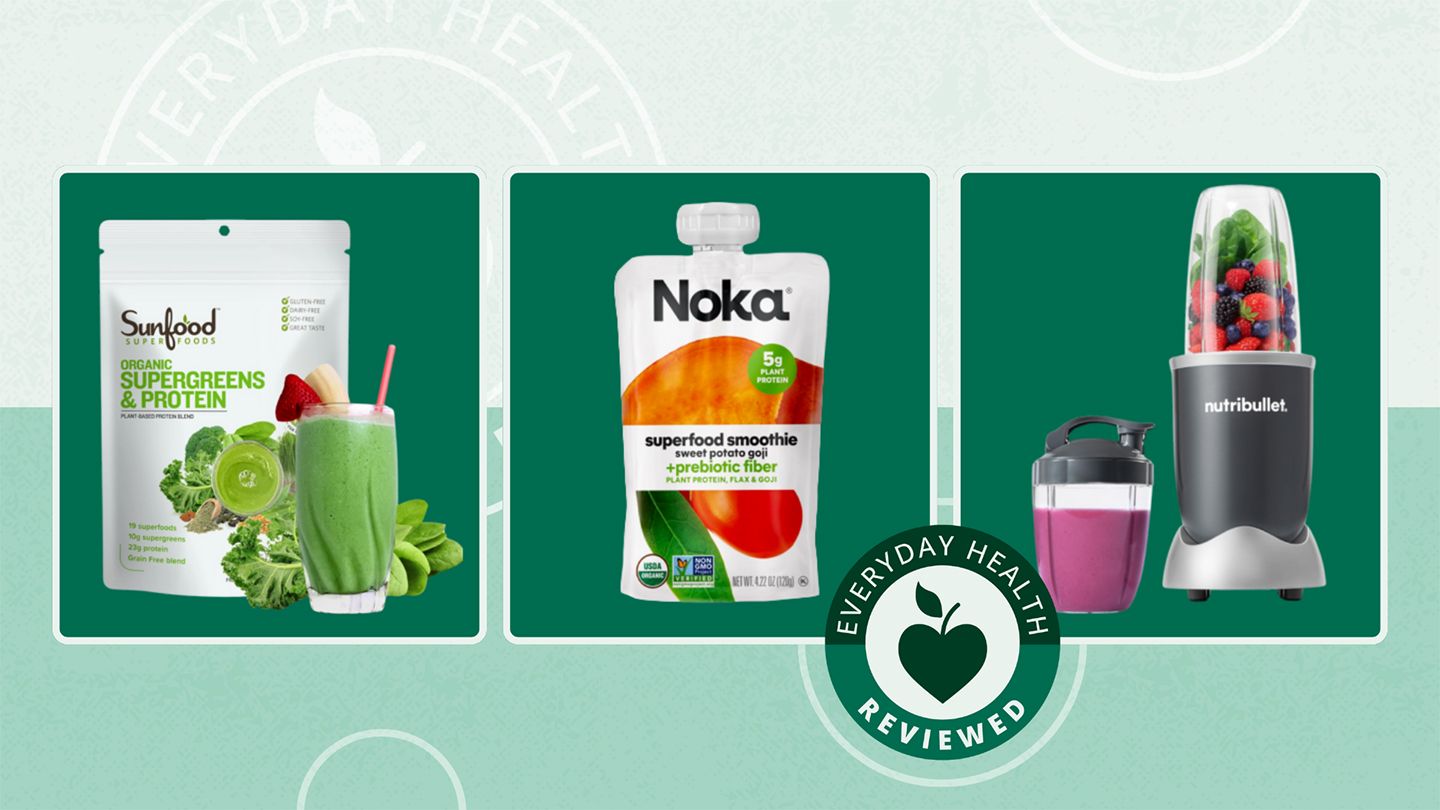
Not all weight loss smoothies are made equally — ingredients are king. A good smoothie has protein, fiber, and healthy fats, while having limited or no added sugar, and a reasonable calorie count.
“A smoothie intended to help with weight loss can do so by its make up of satisfying and nourishing ingredients,” says McIntyre. “There’s no one food or ingredient that will cause weight loss in and of itself. However, we know that nutrients like fiber, protein, and healthy fats promote satiety, the feeling of fullness. When we feel satisfied from the food or beverage we’ve consumed, we’re less likely to overeat as the day goes on.”
Always check calories per serving, and how many servings are in the smoothie. “Smoothies could provide a powerhouse of nutrients, but if you’re not careful — you could also get more calories than you might realize,” says Bonnie Taub-Dix, RDN, CDN, creator of BetterThanDieting.com and author of Read It Before You Eat It — Taking You from Label to Table.
“If you’re trying to lose weight, I’d use 0 percent fat Greek yogurt instead of full fat, fresh or frozen fruit for natural sweetness instead of sugars or syrups, and perhaps powdered proteins or powdered nut butter instead of regular nut butter as a protein source,” Taub-Dix advises.
Certain ingredients should be considered a “red flag” for smoothies — for example, added sugars.
“The biggest red flags are unbalanced smoothies that will not provide fullness and add a large amount of calories from added sugars,” Palinski-Wade says. “Adding refined sugars can increase calorie content and negatively impact blood sugar levels, potentially hindering weight loss efforts. Also, creating a smoothie that contains only carbohydrates with little fiber, protein, or fat will result in a smoothie that will not provide a feeling of fullness for a long period of time, which can result in overeating later in the day.”
The addition of fresh or frozen fruit should provide all the sweetness needed for your smoothie. “There’s no need for the addition of sugary syrups or sugar when you could add natural sweetness from fruit,” Taub-Dix says. “You can also cut sugar by using unsweetened almond milk, like Almond Breeze unsweetened almond milk, which contains no added sugar yet still adds the benefits of being an excellent source of calcium, vitamins D and E, and a good source of vitamin A.”
While weight loss smoothies can be fit into a balanced, healthy diet and lifestyle, they’re just one of many healthy habits.
“Ultimately, sustainable weight loss is achieved through a multitude of consistent behaviors, such as regular physical activity, achieving a regular calorie deficit that allows an individual to continue to meet overall nutrient needs and feel satisfied, adequate sleep, and overall stress management,” McIntyre says. “A balanced smoothie is one component of a healthy lifestyle that can help you feel satisfied while obtaining essential nutrients.”
